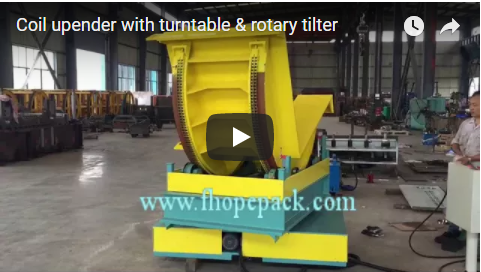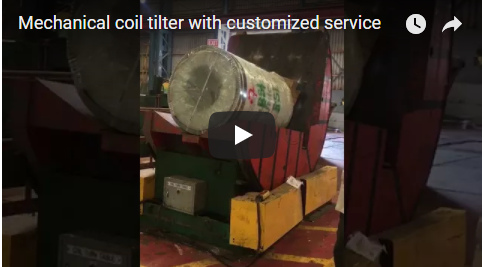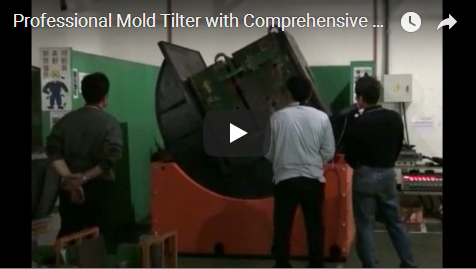Understanding the Hydraulic 90º Coil Tilter with Adjustable Worktable
Hydraulic 90º coil tilters are essential pieces of equipment in many metal fabrication, processing, and storage facilities. Their primary function is to safely and efficiently rotate heavy coils, typically steel or aluminum, by 90 degrees, often changing their orientation from "eye-to-sky" (axis vertical) to "eye-to-wall" (axis horizontal) or vice versa. This capability is crucial for feeding production lines, storage, or preparing coils for shipment. The addition of an adjustable worktable enhances versatility and ergonomics.
1. Core Functionality and Mechanics
At its heart, a hydraulic coil tilter utilizes hydraulic pressure acting on cylinders to achieve smooth, controlled rotation of a load-bearing platform or V-saddle. Key aspects include:
- 90-Degree Rotation: Precisely tilts the coil along one axis.
- Hydraulic Power: Provides significant lifting and rotating force, suitable for handling heavy loads reliably. The system typically consists of a hydraulic power unit (motor, pump, reservoir), cylinders, valves, and hoses.
- Structural Integrity: Built with heavy-gauge steel to withstand the stresses of rotating multi-ton coils.
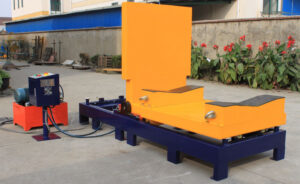
hydraulic tilter 2. Key Features and Technical Considerations
When evaluating or utilizing a hydraulic coil tilter, several technical specifications and features are important:
- Load Capacity: Ranges widely, from 1 ton up to 50 tons or more, depending on the model and application. Always operate within the specified limits.
- Platform/Table Size: Must accommodate the diameter and width of the coils being handled.
- Adjustable Worktable:
- Mechanism: Adjustment can be manual (screw jacks) or powered (often hydraulic).
- Benefit: Allows operators to set the receiving or dispatch height to match conveyors, pallet stands, or machine infeeds, improving workflow and reducing manual effort or the need for additional lifting equipment. It enhances ergonomic positioning for operators during loading or unloading.
- Tilting Speed: Cycle times vary but are designed for controlled, safe movement rather than high speed. Typical cycle times might range from 30 seconds to a few minutes depending on size and load.
- Control System: Usually operated via a push-button pendant control on a flexible lead or a fixed control panel. Wireless remote control options may also be available for enhanced operator positioning and safety.
- Safety Features: Essential for safe operation. Look for:
- Velocity Fuses/Check Valves: Prevent uncontrolled descent in case of hydraulic hose failure.
- Limit Switches: Control the end points of the tilt cycle.
- Emergency Stop Buttons: Immediately halt all motion.
- Structural Stops: Provide mechanical backup at the end of travel.
- Optional Guarding: Physical barriers or light curtains may be integrated depending on the operational environment.
3. Operational Best Practices: From the Shop Floor
Efficient and safe use of a hydraulic coil tilter involves practical knowledge:
- Pre-Operation Checks: Before each use, visually inspect hydraulic hoses for leaks or damage, check fluid levels, and ensure the operating area is clear. Test controls briefly without a load.
- Load Centering: Proper placement of the coil on the platform or V-saddle is critical. Off-center loads can create instability and potentially exceed the capacity of specific components. Follow manufacturer guidelines for load positioning.
- Smooth Operation: Utilize the controls for gradual starts and stops. Avoid sudden, jerky movements which can stress the equipment and the load.
- Workflow Integration: Consider how the tilter fits into the overall material flow. The adjustable table height is particularly useful here, allowing seamless transfers to AGVs, forklifts, or processing machinery.
- Operator Training: Ensure only trained and authorized personnel operate the equipment. Understanding the machine's capabilities, limitations, and safety procedures is paramount.
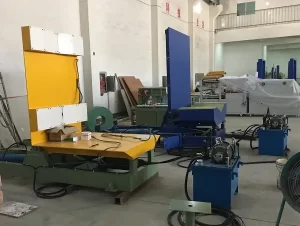
hydraulic tilter and upender for turning 4. Maintenance for Longevity and Reliability
Like any hydraulic machinery, regular maintenance is key:
- Hydraulic System: Periodically check hydraulic fluid levels and quality. Replace filters according to the manufacturer's schedule. Inspect hoses and fittings for wear, abrasion, or leaks.
- Structural Inspection: Regularly examine welds, fasteners, and structural members for any signs of cracking, bending, or excessive wear.
- Lubrication: Grease pivot points and any other lubrication points specified in the manual to ensure smooth movement and prevent premature wear.
- Electrical Components: Inspect control pendants, wiring, and limit switches for damage or malfunction.
5. Benefits in Fabrication and Material Handling
Integrating a hydraulic 90º coil tilter, especially one with an adjustable table, offers significant advantages:
- Enhanced Safety: Drastically reduces the risks associated with manually trying to reposition heavy coils, minimizing potential crush injuries or strains.
- Increased Efficiency: Speeds up the process of changing coil orientation compared to using overhead cranes with specialized C-hooks or complex rigging.
- Reduced Product Damage: Smooth, controlled hydraulic movement prevents coils from being dropped or damaged during rotation.
- Improved Ergonomics: The adjustable table feature allows operators to work at optimal heights, reducing bending and reaching.
- Versatility: Handles a wide range of coil sizes and weights, adaptable to various stages of production or warehousing.
In conclusion, the hydraulic 90º coil tilter is a powerful tool for improving safety and efficiency in coil handling operations. Understanding its mechanics, specifications, and proper operating procedures allows facilities to maximize its benefits and ensure long-term reliable performance.
More solutions for heavy load handling:
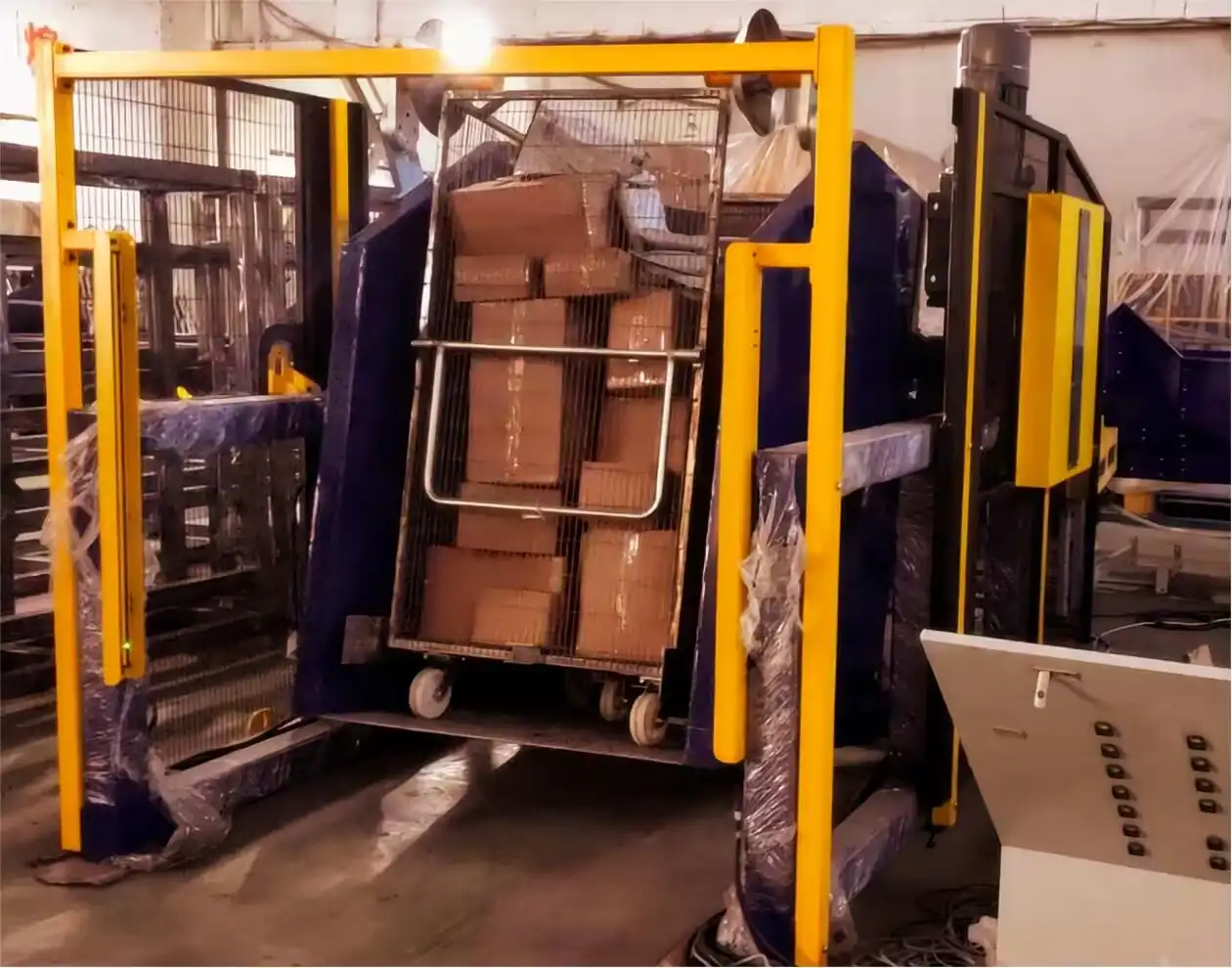
Explore further coil handling solutions:
https://www.fhopepack.com/Coil_upender.html


